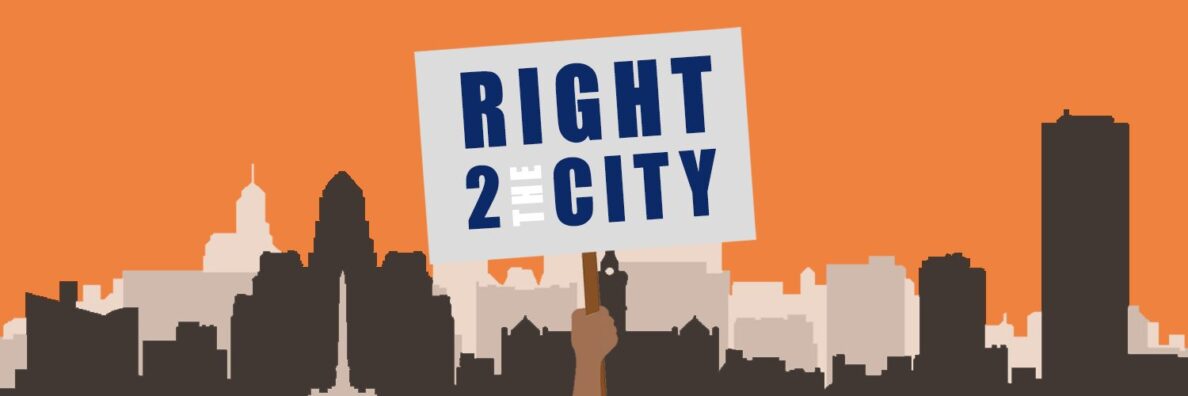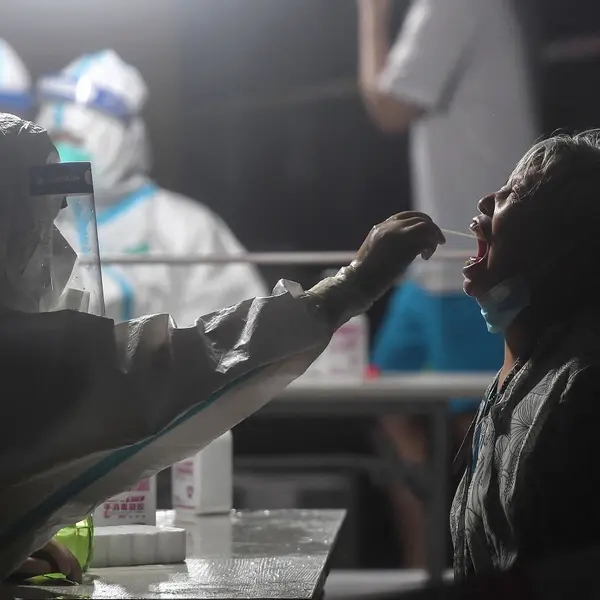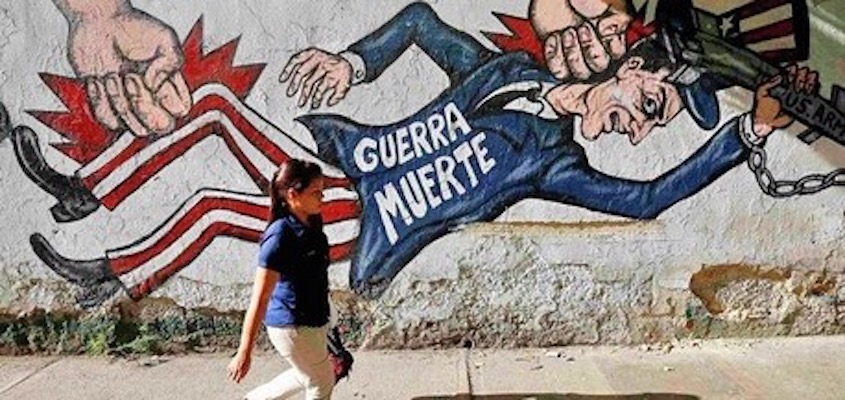Reflections of an Activist Scholar: Henry Louis Taylor, Jr.
It is a great pleasure to share my reflections with you on being an activist-scholar. It is particularly rewarding to have this conversation on the 50th anniversary of Martin Luther King, Jr.’s assassination. Today, I will discuss my quest to connect activism to scholarship, and will divide the presentation into four parts. First, I will give a brief history of my journey to activism and scholarship, and then discuss the importance of the interplay between the two; after which, I will illustrate the use of activist scholarship to produce and implement knowledge for social change. I will conclude by discussing the challenge of linking scholarship to activism.
I am an activist turned scholar, not a scholar turned activist. I started my professional career as a clinical audiologist. My father, who received his Ph.D. from Cornell University in 1954, always challenged me to use my skills and talents in service of black people and to help build a better, more just and humane world. So, I obtained a Master’s Degree in clinical audiology, and became director of audiology at a small Speech and Hearing Clinic in Newport News, Virginia. In the late 60s, like many of my peers, I was radicalized, moved my clinical operations to near-by Hampton Institute, a historically black college, and joined a militant organization modeled after the Black Panther Party.
I was the only college educated black in the organization, and the cadre asked me endless questions about black history, the nature of capitalism, and where the movement was headed. I had few answers. I knew about the cochlear microphonics of the Sudanese rat, but had limited knowledge and understanding of black history, as well as the complicated social, economic, political and cultural problems facing African Americans, and most importantly, how to resolve them. So, I decided to get a doctorate in history to deepen my knowledge and understanding of these complicated issues. After gaining admissions to the University at Buffalo (U.B.) history department, I joined the Detroit-based Black Workers Congress (BWC), which was headed by James Forman, the former head of the Student Nonviolent Coordinating Committee (SNCC). The BWC grew out of the League of Revolutionary Black Workers, viewed black workers as vanguard of the black freedom struggle, and was an active participant in the nascent anti-revisionist community movement.
At U.B., my studies focused on black urban history, with an emphasis on change over time. I viewed history as a continuum moving from the past to the present and into the un-created future, and I wanted to understand how black positionality in the city and metropolis were impacted by change over time. The intent was to understand what problems were resolved as blacks moved from one epoch to another, and which of those problems persisted, becoming increasingly complex and difficult to solve with the passage of time. Once identified, interventions strategies could then be devised to remedy them, thereby creating the possibility of another, and more just and equitable, future. As a student, I correlated my research and studies with my practical activities in the Black Workers Congress. I wanted to understand more deeply how Buffalo’s changing economy and city building process were impacting black steel workers and the neighborhoods in which they lived. Based on my experiences with the steel workers and my involvement in the larger struggles in the community, I started to question if the complicated problems facing blacks could be solved within a capitalist framework.
Regardless, given my limited knowledge of history, I decided to take three years of coursework, and by the time I completed this phase of my studies, I considered myself a Black Marxist, operating in the black radical tradition of scholar activists, such as Carter G. Woodson, Oliver Cox, W.E.B. DuBois, Harold Cruise and Cedric Robinson. After completing my prelims, the organization sent me to Cincinnati, Ohio to organize black workers. This was a significant stage in my political development. I put my education on hold, and became immersed in black working class life and culture, while doing organizational work locally and nationally. To support myself, I worked at the University of Cincinnati Medical School recruiting black and Latinx students and designing learning modules to help them negotiate the medical school curriculum.
During those days, my street knowledge of the daily struggles of the black working class expanded exponentially. At the same time, my appreciation of the gulf between scholarly knowledge and the practical work unfolding in black neighborhoods increased. Organizationally, we approached our work in cities with limited knowledge of local conditions, including the political economy and population dynamics. For example, members of BWC often had little knowledge of how the changing local economy, city building, and public policies were underdeveloping the black neighborhoods in which they worked, nor did they understand how market forces were undermining black living standards and quality of life; and most important, they did not know how to attack or remedy these issues.
My comrades were courageous men and women, who were ready to die for their beliefs, but bravery and street smarts alone could not compensate for our limited knowledge, nor could it provide us with a strategic agenda to bring about fundamental social change. By the late 1970s, the Black Workers Congress had been destroyed by a combination of the FBI’s Counter Intelligence Program [COINTELPRO] and our own youthful mistakes and lack of knowledge.
Stranded in Cincinnati, I contemplated the future as I completed my dissertation. I concluded that the schism between knowledge and the black freedom movement was a serious issue that needed addressing. During this reflection period, Michael Frisch, a friend and chair of my dissertation committee, introduced me to the work of Theodore Hershberg and the Philadelphia Social History Project at the University of Pennsylvania. Ted talked endlessly about the connection between the organization of research and the production of knowledge for social change. He believed in collaborative research and focused on change over time. Here, Hershberg sought to construct interactive linkages among the past, present and uncreated future of cities.
He used an urban as process conceptual framework that models a dynamic interactive relationship between the city and its neighborhoods and the group experience and behavior of different races and ethnicities. In this framework, the type of city and neighborhoods in which people live mattered. They mattered because an interactive relationship exists between people and place. People act on place and place acts on people. Ted’s conceptual framework and organizational approach to research would be a major influence on my future work.
At any rate, sitting in my small apartment in the Mt. Adams section of Cincinnati, I decided to leave the medical school, get a position at a major research university, and ultimately to build a research center that produced knowledge in service of the black liberation movement and the struggles of oppressed people. About a year after receiving my doctorate, I took a joint position at the Ohio State University in the Black Studies and History departments. Here, I started developing a prototype of my research center called the Cincinnati Urban History Project (Project), and I used the university’s work study program to staff it with graduate and undergraduate students—a strategy I learned from Ted Hershberg.
I used the Project to study the relationship between city building and black neighborhood development in Cincinnati. Concurrently, I collaborated with other senior and junior scholars studying Cincinnati. This collaborative approach was based on the Hershberg thesis that socioeconomic problems are too complicated for any one scholar to grasp, therefore research teams are needed to work on them. I creatively applied this thesis by working with other Cincinnati scholars on a topic of mutual interest—the black urban experience. In 1988, I culminated this phase of my work by organizing a three-day conference to identify the best studies on blacks and Cincinnati. I selected the top papers, and put them, along with my own work, in an edited volume, Race and the City: Work, Community and Protest in Cincinnati, 1820-1970.
Based on this collaborative work, I started to view individual racism as a component of institutional and systemic structural racism, which was operationalized within a regional political and economic context that dictated social relations. For example, my spatial analysis of black Cincinnati from 1850 to 1950 showed that blacks lived in shared residential space until the rise of profit-based homeownership and a modern system of land-use regulation destroyed those types of residential settlements. In Cincinnati, then, contemporary racial residential segregation was spawned by intentional federal and state policies and market forces combined with the rise of homeownership as an instrument of wealth production. Within this context, the actions of individual white racists were subsumed within a larger system of structural racism. This finding reinforced my thinking about the necessity to center fundamental structural change in the struggles of African Americans and other oppressed people.
The work on Cincinnati laid the foundation for my future research and practical activities on blacks and the city. Significantly, development of the Cincinnati Urban Studies Project brought me back to University at Buffalo. While going up for tenure at Ohio State, a headhunter recruited me for an administrative post at U.B. I wasn’t interested in the job; I loved being at Ohio State, but the interview gave me an opportunity to get away for a few days and see some old friends. While at U.B., I discussed my views on the relationship between research and problems facings the black community with the search committee and vice-provost. Later, the vice-provost contacted me and said they wanted me to come to the university and build the type of research unit I had discussed with them. He said U.B. would establish an interdisciplinary Master’s Degree associated with the center so that it would have an academic arm. This was the opportunity I had been waiting for. In the fall of 1987, I returned to the University at Buffalo to found the U.B. Center for Urban Studies.
The establishment of the U.B. Center gave me an opportunity to institutionalize the connection between activism and scholarship. My aim was to turn research into a weapon of struggle in Buffalo and across Western New York. I forged an action research strategy based on interactions with neighborhood residents and stakeholders, with the intent of exposing oppressive conditions, raising political consciousness, and catalyzing neighborhood change. For example, our studies on poverty and the growth of an underclass led to formation of the region’s first community economic development corporation, the Office of Urban Initiatives. The unit was housed in my Center and worked mostly on black neighborhood development issues; our market study of an black inner-city neighborhood led to the regeneration of a major shopping center, while our studies of U.B.’s Buffalo campus sparked the onset of a comprehensive redevelopment effort in that community, which included a new subdivision.
Around 1997, I decided to relocate the Center from the College of Arts and Science to the School of Architecture and Planning, where I could more effectively engage the community. Based on our experiences, I concluded that our work could move to a higher level by using neighborhood planning and development as tools for transforming underdeveloped black communities. Relocating to the School of Architecture and Planning would facilitate that quest.
THE CONNECTION BETWEEN ACTIVISM AND SCHOLARSHIP
Why is this connection between activism and scholarship so important? The goal of activist scholars is to consciously produce and implement knowledge for social change. The intent is to understand the world, so that we can change it. This is important because blacks, Latinx, and other oppressed peoples are beset with core problems, which circumscribe their life chances, produce undesirable social, economic, health, cultural and political outcomes, and continually reproduce their positionality at the bottom of society. These are real-life conditions, and they can only be resolved by producing and implementing a knowledge base with the capacity to guide the struggle to eliminate them. The reason is these core problems–inferior education, inadequate housing, poor health care services, food insecurity, joblessness, low-wages, underdeveloped neighborhood and powerlessness–are “wicked problems” that require institutional and systems change to be eliminated. Social change, then, requires the production and implementation of knowledge to solve these wicked core problems that undergird racism, along with economic exploitation and oppression.
Furthermore, because of the complexity of bringing about social change, we must learn from our errors, miscalculation and flaws in thinking, and then we must use this insight to refine and improve our knowledge base. Thus, the interplay between knowledge production and implementation can be conceived as an ongoing process of experimentation, where feedback loops are established between theory and praxis, so the two can reinforce each other. Undergirding this struggle as experimentation viewpoint is the perspective outlined by Kwame Ture (Stokely Carmichael) and Charles Hamilton in their 1967 classic Black Power: “We start with the assumption that in order to get the right answers, one must pose the right questions. In order to find effective solutions, one must formulate the problem correctly. One must start from premises rooted in truth and reality rather than in myth.” This powerful trilogy— ask the right question; formulate the problem correctly; and start from premises rooted in truth and realty—forms the basis of my approach to linking scholarship to activism, and explains the importance of establishing interactive connections between the two.
Toward this end, I think that multiple forms of research can contribute to the production and implementation of knowledge for social change. In some instances, I engage in theoretical studies, which are unrelated to local problems. Then, in other instances, I am involved in action-orientated research to shed light on specific urban or neighborhood problems, while in other instances, I work with specific neighborhoods to develop transformative plans. Here, the focus is on engaging in implementation research, where theory is integrated with practice, thereby enhancing the possibilities of success. In my view, then, research that produces and implements knowledge to solve core problems can range from action-research and community-based participatory research to implementation research and theoretical studies based on archives work and/or big datasets.
Moreover, the methodologies supporting such studies can range from quantitative studies with carefully constructed methodologies to ethnographic fieldwork to interpretative synthesis of the literature in a particular field, and the final products of this work can be books, published articles, technical reports, along with blogs and op-eds, or even reports to other comrades. Also, the rhythm of carrying out such work can vary. In some instances, for example, my work is exclusively focused on theoretical studies, and I am isolated from engagement in struggle; while at other times, I am almost completely absorbed in on the ground struggles. At still other times, a balance exists between my scholarly activities and engagement in struggle. However, I consider all these activities part of my political activism, with each activity informing the other. For example, even when I am totally emerged in the heat of battle, I never cease being a scholar, trying to integrate my academic knowledge with community and street knowledge, and using insights derived from the synthesis to help advance the struggle. In my world, activism and struggle are never separated.
My point is that many different types of research and methodologies can contribute to the production and implementation of knowledge for social change; but regardless of the approach used, one should always follow the Ture and Hamilton credo—was the right question posed? Was the problem formulated correctly? Was the premise rooted in truth and reality? Within this context, to be implemented, knowledge must always be recreated as programs and activities called reforms. Thus, when linking theory to practice, we must distinguish between liberal and radical reforms. Liberal reforms are those designed to mitigate socioeconomic conditions among oppressed people, without bringing about fundamental change in the operation of institutions or systems that spawn racial and social injustice and inequity. These reforms inevitably lead folks down the path of liberaldogoodism, where they engage in activities that make them happy, but that do not alter the conditionality under which oppressed people live. On the flipside, radical reforms seek remedies that alter the operation of such institutions and systems. These reforms are linked to freedom dreams and radical visions of other possible worlds, situated in the uncreated future. Radical reforms, when implemented, force neoliberal capitalism to ingest viral remedies that are toxic to its system. Operating within this framework, the goal of the activist scholar is to produce knowledge and convert it into radical reforms that can spawn systemic structural changes in society.
Lastly, before moving on, I want to stress the importance of conducting studies of social movements, as well as studies of smaller, less celebrated struggles against oppression and exploitation. Efforts to bring about social change will always be met with resistance. The black abolitionist, Frederick Douglass once said, “Power concedes nothing without demand. It never has and it never will. If there is no struggle, there is no progress.” In essence, discussions about the interplay between theory and practice implicate the role of knowledge production in illuminating and facilitating the struggles of oppressed people. Thus, we need studies of such movements, especially the civil rights, black power, and new left movements, to deepen our knowledge and understanding of them and the lessons they can teach us.
THE WORK: FROM THEORY TO PRACTICE
Now, I want to shift to a discussion of two projects to illustrate the role that activist scholarship can play in bringing about social change. First, I will discuss my work on neighborhood life and culture in Cuba, and then converse about efforts to apply the insights learned from the Cuba study to neighborhood development in the United States. The task of developing radical reforms requires imagining other possible worlds and how these alternative realities can emerge out of our current situation. So, in 1998, when my friend, Jose Buscaglia, asked if I wanted to spend a month teaching in Cuba as part of a U.B. Summer Study Abroad program, I immediately said yes. I had long admired the Cuban Revolution, respected Fidel and Che, and knew about the alliance between black radicals and the Cuban government. However, my enthusiasm went beyond the romanticism of a black radical sojourning to a revolutionary mecca. As a historian and urban planner, who studies and does practical work in underdeveloped U.S. neighborhoods, I wanted to gain insight into Cuba’s approach to neighborhood development and learn how they grappled with the issues of race and class. I wanted to determine if any of their experiences could be creatively applied to our situation in the United States.
Once in Cuba, I worked with faculty members at the Universidad de la Habana School of Social Sciences to design an exploratory research course, which blended ethnographic fieldwork with classroom lectures taught by myself and social science faculty at the universidad. The Cubans allowed my students and I to visit any site or facility desired, and to travel freely throughout Havana and across the island. Classes were held during the week, including taking fieldtrips, and we travel to various parts of the country on the week-ends. Additionally, the students did a group research project on the San Isidro neighborhood located near the Convento Santa Clara, where we stayed.
Unlike other groups, the Cubans allowed the U.B. delegation to live in a community setting in Habana Vieja, the oldest section of the city. Habana Vieja was a mostly Afro-Cuban working class neighborhood; and in this community, I became immersed in everyday life and culture. I hung out mostly with street hustlers and ordinary Cubanos. My intent was to learn about their Cuba, so I formed deep friendships with them. They took me into their homes and their lives, and showed me a Cuba that tourists rarely, if ever, see. During this same period, a close Cuban friend introduced me to Nehanda Isoke Abiodun, an African American woman living in political exile on the island. Nehanda was a Harlemite, close associate of Assata Shakur, the most famous US exile, and a member of the Republic of New Afrika and the Black Liberation Army. She was granted political asylum in 1990. Nehanda was the last African American to be given such as status.
Thus, my relationship with Cuban academics, working class Cubanos, and an African American living in exile gave me an opportunity to learn about the island through Cuban eyes, filtered through the lens of an African Americans. My overarching goal was to gain insight into race relations and the Cuban neighborhood development process, and to determine what, if any, community development concepts could be uploaded and creatively applied to our situation in the United States. Within this context, I wanted to understand how public policy and socialist culture filtered down through the Cuban bureaucracy to ordinary Cubanos. Then, in 2004, the Bush Administration ended U.S. Summer Abroad Programs in Cuba.
This breakpoint created the opportunity for me to summarize my Cuban experiences in a book length manuscript. I decided to undergird the project with house-to-house surveys, so I had a deeper understanding of how ordinary Cubanos viewed neighborhood life, education, health care, and the social supports system, as well as how they made ends meet. Concurrently, I decided not to ask the Cuban government for permission to do the study. I wanted my findings to be free from any taint of government influence or censorship. This research project, then, was a stealth one. I organized a research team composed of 20 ordinary Cubanos and paid them a small stipend to participate. I explained the secrecy of the project to team members, taught them how to conduct survey research, established a system of quality control, and took digital photographs of every completed survey, as a security measure, in case the government seized the hard copies. I used a snowball sampling technique, and the team conducted 398 house-to-house surveys in about seven different Havana neighborhoods.
The project had four important takeaways, which I believed could be creatively applied to our situation in the United States. First, the Cubans conceptualized neighborhoods as physical and social spaces, and placed great emphasis on the development of social capital and granting control over neighborhood space to the residents. Second, the government transformed underdeveloped neighborhoods into family-friendly communities that supported solidarity, resiliency, reciprocity, good health, and the development of social capital. These neighborhoods were highly organized, structurally functional places based on community control, participatory democracy and neighborhood-based service delivery, including primary education and health care. Third, the Cubans used mass homeownership to spawn neighborhood stability by anchoring people in place, which laid the foundation for building of trust and solidarity. Lastly, they used a neighborhood-government partnership to sustain the community’s growth and development. Thus, although neighborhood residents were poor, the operation of their communities as a structurally functional places changed what it meant to be poor.
In summary, the Cubans intentionally designed their underdeveloped neighborhoods as structurally functional spaces with the organizations, institutions, services, supports, and cultural frameworks needed to nurture and help residents grew and develop. In this setting, residents were given the power and authority to control their space and anchor their neighborhoods in solidarity, reciprocity, self-reliance and participatory democracy. Within this framework, the Cubans smartly provided the most vulnerable communities with the greatest government support and assistance. Lastly, we should be careful not to romanticize these Cuban neighborhoods. Life was hard and very difficult, but the community’s organization, structure and function turned them into places that facilitated the development of residents, thereby spawning desirable social outcomes, even though people faced many challenges.
Reflecting on the Cuban experience, the really big question that intrigued me was could their principles of neighborhood development could be creatively applied to underdeveloped communities in the United States. I am currently working with Buffalo’s King Urban Life Center to find out. The King Center’s host neighborhood is a marginalized, black rust belt community of about 3,300 residents, situated in a low market demand area, characterized by the serious loss of housing units, vacant land, abandoned structures, poorly maintained rental properties, and a declining population.
I am vice-president of the Center’s Board of Directors, and a member of its neighborhood development committee. Our efforts to regenerate the community have moved through two stages and is entering a third. First, to gain insight into the economic, social and political forces underdeveloping the neighborhood, my students and I, in partnership with the residents, conducted a yearlong study, which included field observations, focus groups, survey research, parcel level assessment of structures, and an analysis of property ownership. Second, this past fall, based on insights derived from the research study, I taught a studio course to develop a plan to regenerate the King Center neighborhood. The intent was to integrate the core principles derived from my study of Cuban neighborhoods into the redevelopment strategy for the King Center community.
Toward this end, the plan sought to integrate community building activities with the neighborhood’s physical design and development, while it aimed to use a radical community land trust strategy to gain control over the neighborhood development process. A cooperative housing strategy was proposed to deepen and expand the communal property ownership ideal, while an aggressive building code inspection and housing receivership strategy was suggested to improve the quality of rental housing, while maintaining its affordability. Third, we are now in the process of forging an implementation strategy to guide the plan’s execution. For this implementation strategy to work, we will need to privilege community organizing and use it as the engine to drive the community building and participation process. Finally, the most critical component of this plan will be a strategy to generate sustainable resources to finance the effort. Of course, to be completely transparent, I have absolutely no idea if this bold neighborhood regeneration strategy will work, but we intend to try. Either way, however, the results of this experience, along with the lessons learned, will be studied, analyzed, and published.
In closing, I want to say a few words about the challenge of doing this type of research. To start, I believe that activism and good scholarship are intertwined. The struggle to transform the conditions of life among oppressed people and build a better and more just and equitable world is an extraordinarily complex task, which requires the highest level of scholarship, accompanied by battles down on the ground. There can be no progress without struggle; and struggle without the guiding light of knowledge will fail. Given this reality, I see no contradiction between activism and good scholarship. Yet, at the same time, I know that some people will downplay the complexity of struggles to solve the core problems facing blacks and oppressed people. These folks want to separate activism from scholarship, and they view civic engagement as a “thin,” non-scholarly, citizenship thing. Of course, this type of thinking is misguided and should be ignored; but my larger point is this–when scholarship is connected to activism, the quest for tenure and promotion, in most instances, should take care of itself.
This tenure and promotion issue notwithstanding, I believe one of the big challenges facing activist scholar is asking the right question to guide the research process. Core problems, and their offshoots are very complex, and posing research questions, which will push us beyond descriptive analysis, or symptomatic issues to causality is arduous. Moreover, understanding a problem and knowing how to solve it are two fundamentally different things; and one does not automatically follow the other. For example, I think we understand the socioeconomic and political forces that create extreme loss of housing units, unbuilt lots, abandoned structures and poorly maintained rental properties in underdeveloped rust belt cities, but knowing how to solve this complicated problem in low-demand market areas remains elusive.
I want to close this presentation as I started it. In my journey across time, I have come to believe that connecting activism to scholarship is our best hope for solving the core problems facing the oppressed, advancing the struggle of the American people, and building a more just, equitable and humane society. Knowledge alone, however, is not enough. As Frederick Douglass said, “Without struggle, there is no progress. There never has and there never will be.” And this is exactly why scholarship must be linked to activism.
Thank you.
Author Profile
Latest entries
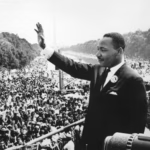 Henry Louis Taylor, Jr.01/20/2025Reflections on Martin Luther King, Jr.’s Dream
Henry Louis Taylor, Jr.01/20/2025Reflections on Martin Luther King, Jr.’s Dream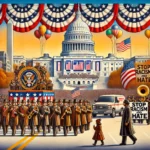 Henry Louis Taylor, Jr.01/09/2025The Trump Inaugural Parade is a Political Event
Henry Louis Taylor, Jr.01/09/2025The Trump Inaugural Parade is a Political Event Henry Louis Taylor, Jr.05/04/2024The Occupation of Hayes Hall: Student Rebellions and Remaking the U.S. UniversityThe Occupation of Hayes Hall
Henry Louis Taylor, Jr.05/04/2024The Occupation of Hayes Hall: Student Rebellions and Remaking the U.S. UniversityThe Occupation of Hayes Hall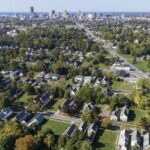 Henry Louis Taylor, Jr.03/21/2024Ryan’s infill housing strategy is the right plan for Buffalo
Henry Louis Taylor, Jr.03/21/2024Ryan’s infill housing strategy is the right plan for Buffalo
